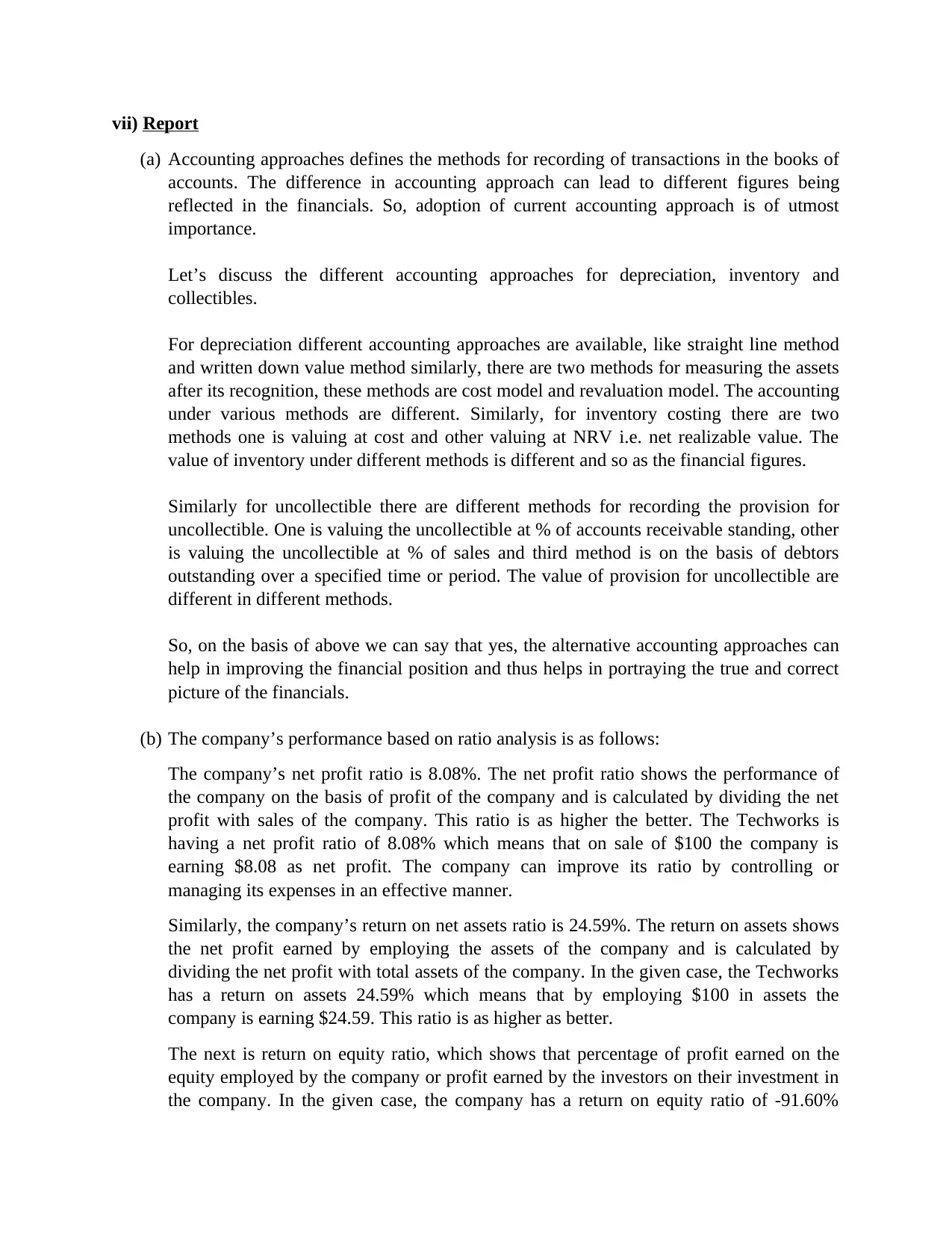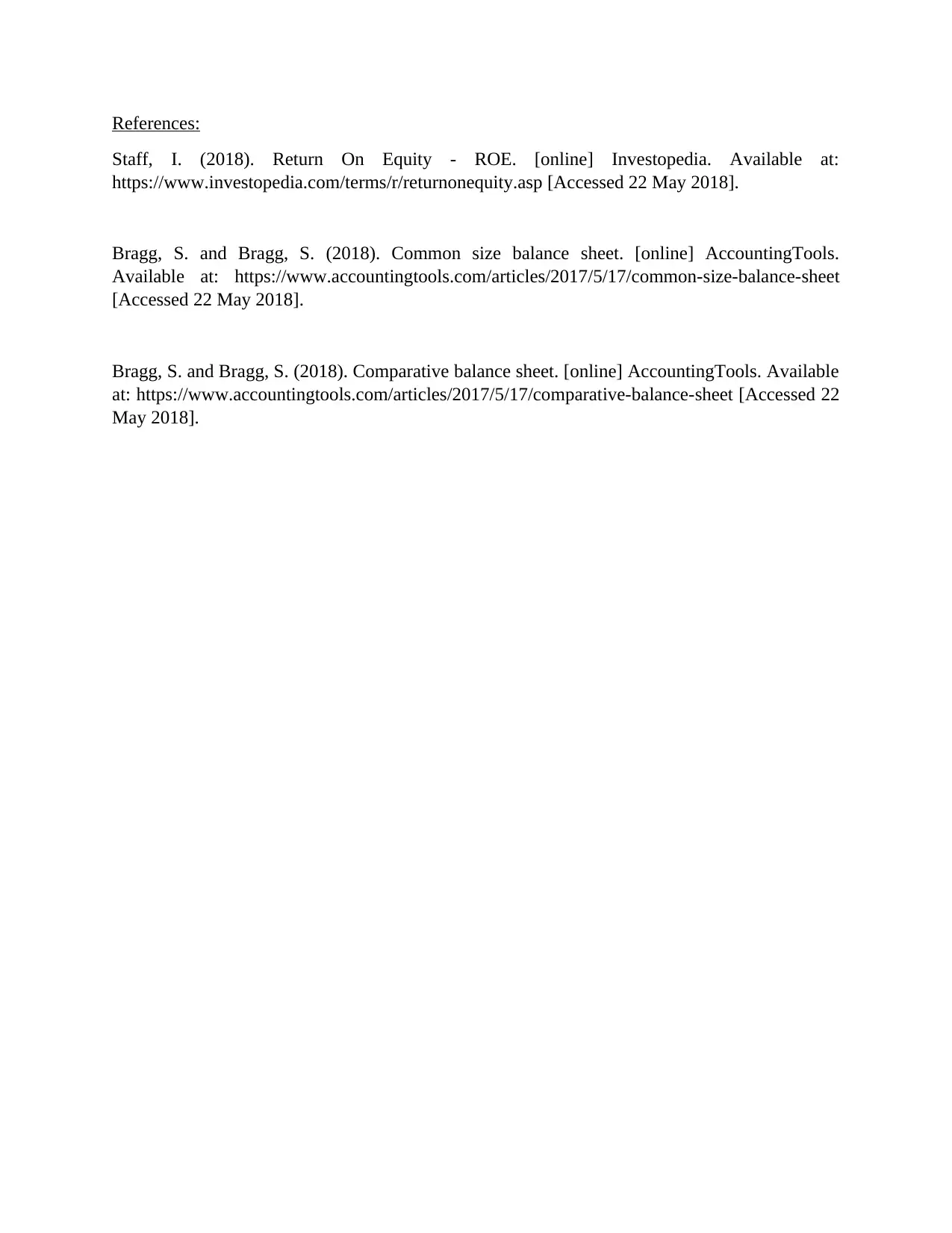Analysis of Accounting Methods and Financial Performance Report
VerifiedAdded on 2021/06/18
|3
|919
|34
Report
AI Summary
This report examines various accounting approaches and their impact on financial performance, focusing on depreciation, inventory costing, and uncollectible accounts. It analyzes the financial performance of Techworks using ratio analysis, including net profit ratio, return on net assets, and return on equity. The report also includes a comparative and common-size balance sheet analysis, highlighting changes in assets and liabilities. The analysis reveals the importance of selecting appropriate accounting methods to accurately reflect a company's financial position and performance. Additionally, it identifies external factors, such as political, social, and environmental influences, that can impact a company's financial health, and suggests the importance of management vigilance to mitigate these risks. The report concludes by emphasizing the need for proactive measures to improve financial ratios and overall company performance.
1 out of 3










![[object Object]](/_next/static/media/star-bottom.7253800d.svg)